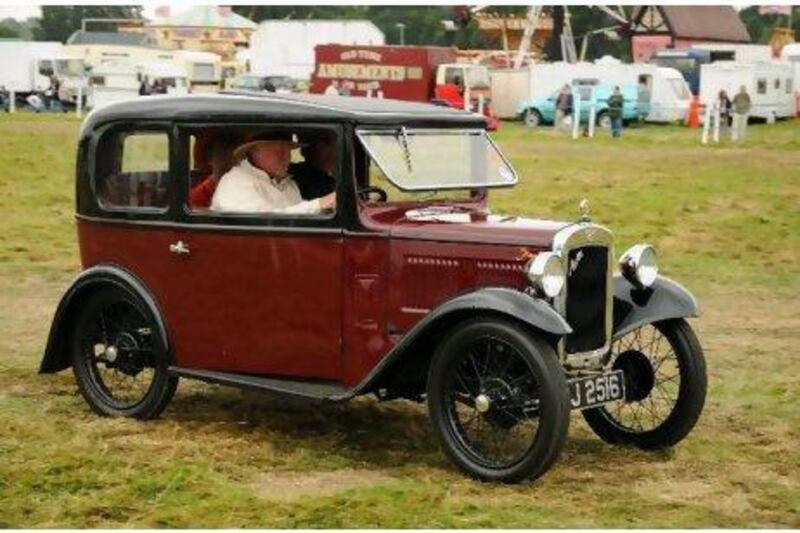In America it was Ford's Model T that revolutionised the automobile industry and brought motoring to the masses. Britain's response came in the form of the delightful, dinky Austin 7. Before the First World War cars were reserved for the privileged few, far out of reach for your average Tom, Dick and Harry. These sumptuous saloons were the boys' toys of their era; the equivalent of a modern-day super-yacht. But as peace prevailed, manufacturers began to realise that the road to fortune lay, not in pandering to the wealthy, but in providing for the working class.
Herbert Austin had made his name making large, luxurious saloons but, with profits drying up and creditors knocking at his door, he came up with a concept as brilliant as it was simple. If he could create a scale model of his existing cars he would increase his market share dramatically. It was a simple yet ingenious formula: reduce the size, reduce the price and maximise profits. The Austin 7 completely transformed the British motor industry and ensured that his marque would dominate for 60 years. As it was significantly cheaper than any other car on the market, 7s sold in their thousands to those who swapped their draughty cyclecars for their first-ever motor.
In a 17-year run that ended on the eve of renewed hostilities with Germany, almost 300,000 cars had rolled off the production line, which, in a British context, was mass manufacture on an unprecedented scale. It was such an important breakthrough in the industry that its production and popularity was destined to extend far beyond British shores. It was made under licence in Germany, France, USA and beyond. Indeed, eight decades before BMW acquired the Mini, the first car it built was an Austin 7, branded as the BMW Dixi.
But though its secret was its simplicity, its success must be attributed to more than its proletariat price tag. For the 7 was not only small, it was also very stylish. It is unusual for a budget car to be a head-turner but the 7's sweeping coachwork and charming looks made it just as easy on the eye as it was on the wallet. It was offered in several different body styles, including the toy-like Chummy Tourer and the elegant Ruby saloon. The two-seater "Nippy" sports has been the inspiration for countless cartoon cars since.
The 7 played an important role in social history, too, as, for most Britons born between the wars, it was the first car they ever owned. For many families, it was in a 7 that they first explored the countryside, ventured beyond their native counties and enjoyed the freedom of the open road. For a whole generation, the cherished memories of childhood were memories of the 7. It went everywhere with them, was a constant companion on the adventures of youth and was a cherished member of the family.
This unusually intimate relationship between man and motor was recognised by Austin, who retained the beloved brand name long after the car had gone out of production. Indeed, arguably the most important car ever to have been produced - the Mini - was originally released branded as the Austin 7 in 1959.
It is remarkable that a car designed almost a century ago is so attuned to the demands and desires of the modern motorist. It is small yet stylish, functional but fun, compact but with character. It was the grandfather of superminis and provided the template for all affordable automobiles that followed. That few were able to match its winning combination of charm and customer satisfaction is testament to the brilliance of its design. It should not be surprising then, that the 7 is one of the few pre-war cars that can still be found in everyday use. It may be one of the smallest cars ever made, but there are few that can claim to have played a larger role in automobile history.






